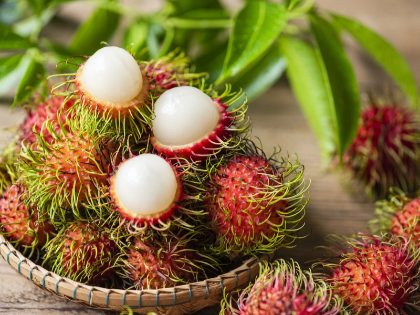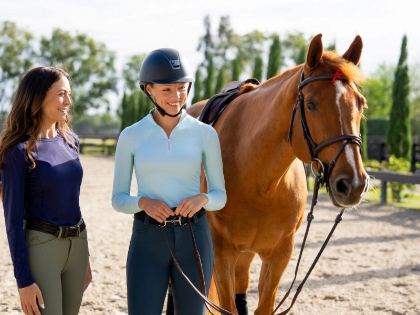Horseback Riding for Kids: Getting Started
Children can get a special combination of physical exercise, mental concentration, and emotional development from horseback riding—an exciting and fulfilling pastime. Many children ride not just as a pastime but also as a lifetime interest. Covering basic issues including selecting the appropriate riding school, knowing safety precautions, and honing riding skills, this article acts as a guide for parents and children wishing to start the road of horseback riding.
Selecting Appropriate Riding School

Recognizing Safety precautions
 Particularly for young riders, safety is first priority in horseback riding. Parents and children alike should know the fundamental safety precautions involved in riding before beginning classes. First is dressing in the suitable clothing. This covers a certified riding helmet, suitable shoes with a heel, and comfortable clothes allowing movement.
Youngsters should also learn about body language and horse behavior. Knowing how to approach and handle horses helps one avoid mishaps and develop confidence. Usually covering these subjects in class, instructors can help parents reinforce them at home. Encouragement of children to remain calm and polite around horses promotes a safe surroundings and a good interaction with these creatures.
Particularly for young riders, safety is first priority in horseback riding. Parents and children alike should know the fundamental safety precautions involved in riding before beginning classes. First is dressing in the suitable clothing. This covers a certified riding helmet, suitable shoes with a heel, and comfortable clothes allowing movement.
Youngsters should also learn about body language and horse behavior. Knowing how to approach and handle horses helps one avoid mishaps and develop confidence. Usually covering these subjects in class, instructors can help parents reinforce them at home. Encouragement of children to remain calm and polite around horses promotes a safe surroundings and a good interaction with these creatures.
Foundational Riding Techniques
 Children will start acquiring necessary riding abilities as soon as they start their lessons. Among these include mounting and dismounting, properly gripping the reins, and keeping perfect saddle posture. Young riders will be guided through these foundations by instructors so that they have a strong basis before moving on to more difficult maneuvers.
Learning fundamental riding techniques helps kids get more confident and better coordinated. Simple activities like strolling and trotting let children grow acquainted with the movements of the horse and develop good mount communication skills. As they advance, they might also pick up fundamental actions like turning and stopping—qualities absolutely vital for safe riding.
Children will start acquiring necessary riding abilities as soon as they start their lessons. Among these include mounting and dismounting, properly gripping the reins, and keeping perfect saddle posture. Young riders will be guided through these foundations by instructors so that they have a strong basis before moving on to more difficult maneuvers.
Learning fundamental riding techniques helps kids get more confident and better coordinated. Simple activities like strolling and trotting let children grow acquainted with the movements of the horse and develop good mount communication skills. As they advance, they might also pick up fundamental actions like turning and stopping—qualities absolutely vital for safe riding.
Establishing rapport with the Horse
 Horseback riding is much enhanced by the relationship between rider and horse. Children should be urged to spend time with their horse outside of classes so they may establish a relationship that improves their riding experience. Riding is more fun and efficient when the horse is groomed, fed, and cared for with trust and understanding fostered.
Developing this relationship can also impart to kids empathy and responsibility. Knowing a horse's wants and feelings will assist children develop closer awareness of their mount, therefore enhancing their performance and communication during rides. Since a well-connected rider and horse may cooperate more harmonically, which results in a more satisfying riding experience, instructors often stress the need of this link.
Horseback riding is much enhanced by the relationship between rider and horse. Children should be urged to spend time with their horse outside of classes so they may establish a relationship that improves their riding experience. Riding is more fun and efficient when the horse is groomed, fed, and cared for with trust and understanding fostered.
Developing this relationship can also impart to kids empathy and responsibility. Knowing a horse's wants and feelings will assist children develop closer awareness of their mount, therefore enhancing their performance and communication during rides. Since a well-connected rider and horse may cooperate more harmonically, which results in a more satisfying riding experience, instructors often stress the need of this link.
Investigating Various riding techniques
 Children who grow more at ease riding horses could wish to investigate other riding forms. Horseback riding encompasses several disciplines including English, Western, dressage, and jumping. Every style has different approaches and focuses that let riders choose one that speaks to their aims and hobbies.
Encouragement of children to experiment with several genres helps them to identify their tastes and strengths. Many riding schools provide young students the opportunity to practice several riding techniques by including beginning courses in many disciplines. Since every discipline stresses distinct approaches and facets of horsemanship, this study can also improve their general riding ability.
Children who grow more at ease riding horses could wish to investigate other riding forms. Horseback riding encompasses several disciplines including English, Western, dressage, and jumping. Every style has different approaches and focuses that let riders choose one that speaks to their aims and hobbies.
Encouragement of children to experiment with several genres helps them to identify their tastes and strengths. Many riding schools provide young students the opportunity to practice several riding techniques by including beginning courses in many disciplines. Since every discipline stresses distinct approaches and facets of horsemanship, this study can also improve their general riding ability.
Competitive and Developing
For individuals who grow passionate about riding, competition offers an interesting path to investigate. Many riding schools provide young riders chances to compete locally, which can increase confidence and provide priceless experience. Competing helps kids to create objectives, work hard, and see the outcomes of their efforts, therefore promoting a feeling of success. While stressing the need of sportsmanship and personal development, parents should assist their children in their inclination in competitiveness. Though winning is thrilling, the emphasis should equally be on pleasure of the sport and development. Young riders can be guided by instructors through the competitive process, therefore preparing them for the challenges and benefits of riding in events.









